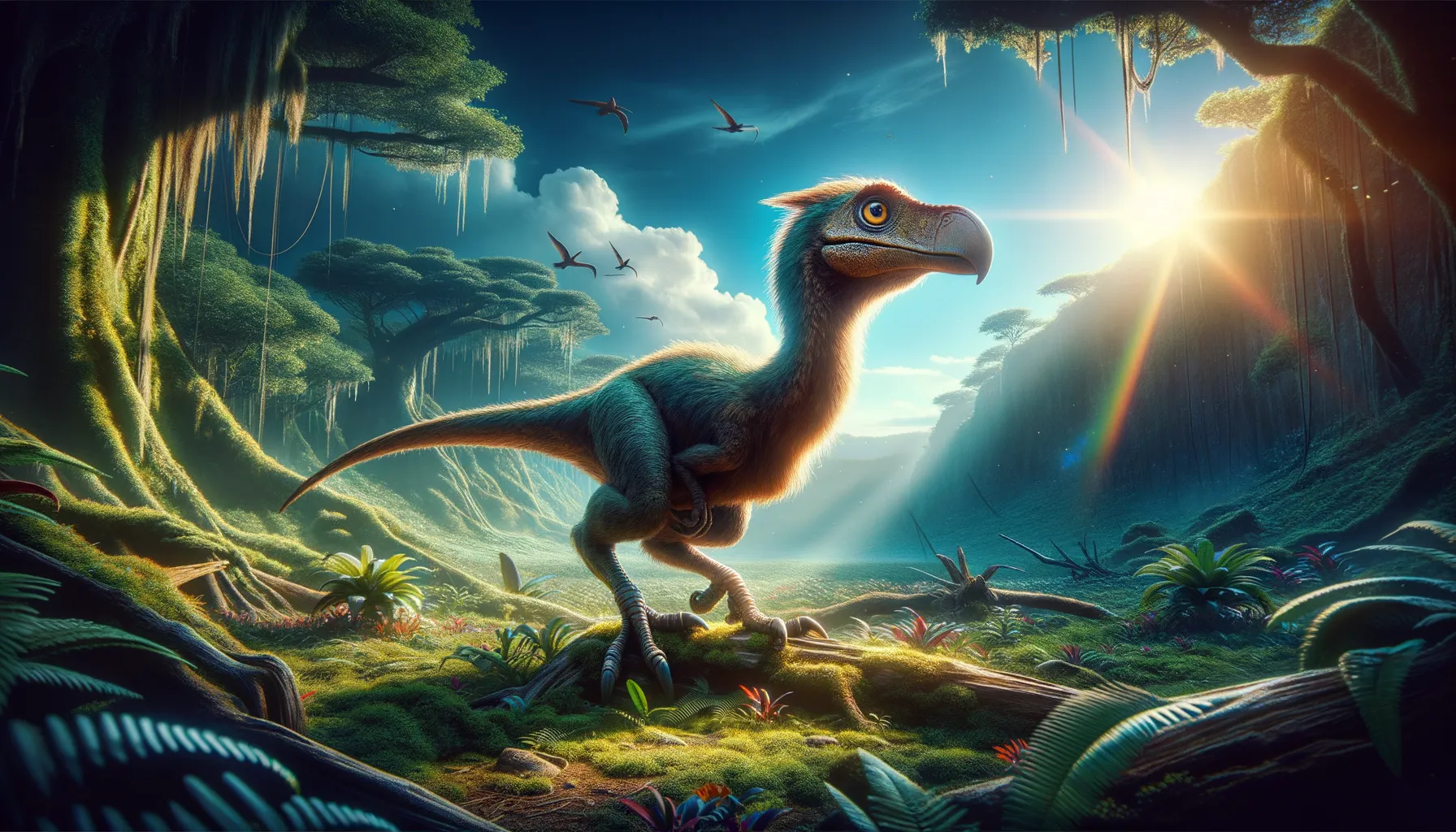
Troodon
Sharp-minded dinosaur with amazing adaptability!
Period
Cretaceous
Length
Around 6 to 8 feet long.
Height
About 3 feet at the hip.
Weight
Approximately 50 to 110 pounds.
Troodon was a small to medium-sized, bird-like dinosaur that roamed the earth during the late Cretaceous period. Known for its sharp intelligence and keen senses, Troodon had large eyes and a specialized brain that set it apart from many of its contemporaries. Often considered among the most intelligent dinosaurs, Troodon had the physical attributes and behavioral traits that hinted at a high degree of adaptability and survival skills in a challenging prehistoric environment.
Diet
Troodon was an omnivore, indicating a varied diet. Its diet likely included small animals, insects, and plants.
Hunting
Troodon likely utilized its intelligence and keen senses to outsmart prey. Its agility and speed made it a skilled predator, especially for small animals.
Environmental challenges
Living in a diverse environment, Troodon faced challenges like predation and competition for resources. Its adaptability helped it survive in changing climates and landscapes. The Cretaceous period was a time of fluctuating sea levels, impacting its habitats.
Speed
Troodon was relatively fast, relying on its lightweight structure and long legs for efficient movement.
Lifespan
Troodon's lifespan is estimated to be around 10 to 20 years.
First discovery
First discovered in the Judith River Formation, Montana, in 1855.
Fun Facts
- Troodon had one of the largest brains relative to its body size among dinosaurs, suggesting it was quite smart.
- Troodon eyes were large, which likely gave it excellent night vision, making it a successful nighttime hunter.
- Despite its small stature, Troodon was about as long as a modern day bicycle, measuring around 6 to 8 feet in length.
- Fossil evidence suggests that Troodon had a variety of teeth, indicating it might have been an omnivore that enjoyed both meat and plants.
- Troodon's name means 'wounding tooth,' referencing its sharp, serrated teeth.
- Some scientists think Troodon may have lived in colder climates, as some fossils have been found in what is now Alaska.
- Troodon had slender, bird-like legs which suggests it was a fast and agile mover.
Growth and Development
Troodon grew rapidly during its early stages of life. Its development included strengthening its limbs and honing its hunting skills. The dinosaur's brain likely expanded as it matured, enhancing its problem-solving abilities.
Habitat
Troodon inhabited forests and open areas, adapting well to diverse surroundings. Fossil evidence shows it lived in what are now North America and possibly parts of Asia. Its habitats provided a mix of plant and small animal resources.
Interaction with other species
Troodon interacted with a variety of other dinosaur species, possibly competing for similar resources. Its intelligence might have given it an edge in avoiding larger predators. This dinosaur potentially lived in small groups, facilitating social interactions.
Natural lifespan
Troodon likely lived up to 20 years in the wild.
Reproduction
Troodon likely laid eggs in nests, showing social behaviors related to childcare. It probably incubated its eggs using body heat, similar to modern birds. Fossils suggest Troodon parents may have cared for their young post-hatching.
Social behaviour
Exhibiting some social behaviors, Troodon might have hunted in packs or small groups. Its intelligence could have facilitated better communication among group members. Troodon's social structure is still a topic of research.
Fossil locations
Most Troodon fossils have been found in North America, specifically in Montana and Alberta. These discoveries help paleontologists understand its distribution and lifestyle. Additional remains in other regions hint at a broader range than initially believed.
